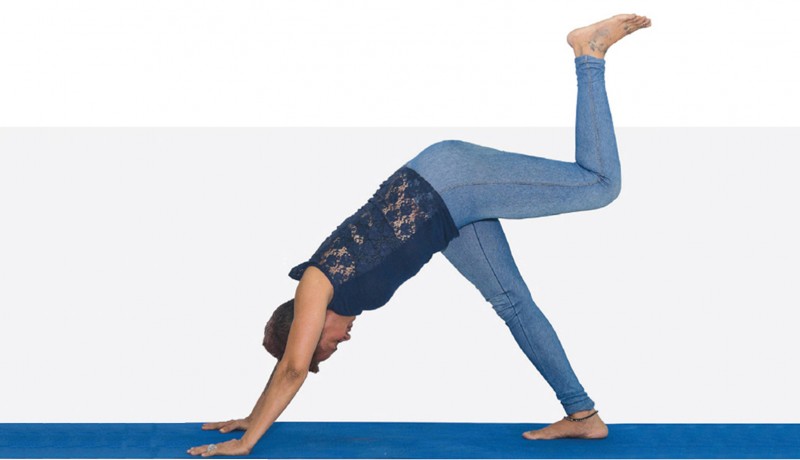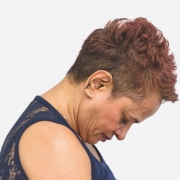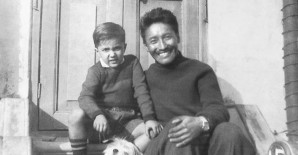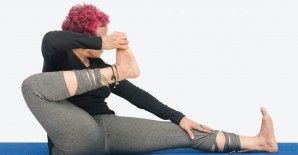
Columns

Shameem Akhtar shows poses to tackle thyroid-related problems
Thyroid-related problems afflict a large swathe of people, especially women. We talk of messy metabolism almost casually; perhaps we simply have no clue how complex this process is. Nor do we appreciate the huge network of internal biological communication needed for it.
This vast term—metabolism—is handled by the thyroid hormones (T 3 and T4), generated by the gland at the throat. But how much depends a lot on several feedback loops, and a primary one from the pituitary gland in the brain. In recent years, scientists have unravelled that many of the bodily processes, including intercellular ones, depend on feedback loops that source information on how you perceive the external world. We can safely presume for many of us that the perception of external stimuli is largely anxiety-inducing. Many of us, in fact, hide from this anxiety through addictive behaviour: gadgets, food, mind-numbing stimulants, or even excessive work. In fact, at this point, thyroid problems are treated symptomatically, rather than rooted out at the psychosomatic level where triggers are unleashed.
Excessive thyroid levels cause hyperthyroidism, creating a hyper-person, anxious, nervous, and fatigued as a consequence. Hypothyroidism, which can eventually cause even heart problems, is the other end of the spectrum, causing lethargy, dullness of the mind and lack of interest. It is intriguing how the metabolic topsy-turvy directly impacts one’s personality dramatically. Yet, we tinker at the problem at a purely physical level.
Yogic therapy, which should be done alongside conventional medical treatment, should include practices that are different for the problems mentioned above. For hyperthyroidism, calming practices need to be included that do not strain the throat. The inverted psychic lock (viparita karani mudra) is best for both conditions because it engages the thyroid without stressing it. Gentle energy-releasing practices (the pawan muktasana series) are good in hyperthyroidism. Gentle but intense pranayama like the victory breath (ujjayi) are ideal to calm high levels of nervous energy in this condition. In hypothyroidism, the fish pose (matsyasana) and shoulder stand (sarvangasana), which exert a positive stress at the throat, may be employed. Pranayama practices can be stimulating in the latter condition and include the skull-cleanser practice (kapalabhati), and bellows breathing (bhastrika).
YOGIC MOVES
Inverted V or downward-facing dog pose (adhomukhosvanasana)
Go on your fours. Inhale. Exhale. Pressing into your shoulders, push your hips up while straightening your legs to create an inverted V with your entire body. Continue normal breathing. Push down at the heels and move your shoulder blades towards each other to intensify the pose. Look at your feet, or your navel. Inhale and raise one leg into the air. Hold for a few seconds. Breathe normally. Exhale; drop the leg down. Repeat for the other side. For the end pose, drop back on your knees and rest on your stomach.
Benefits: This pose has a gentle impact on the neck, affecting the thyroid positively. It is also said to tone the voice and improve communication skills. Further, it builds stamina and promotes overall flexibility.
KNOW YOUR KRIYA
Jalandhara bandha
Caution: Do not practice this in extreme conditions of thyroid malfunction and avoid in hyperthyroidism. This kriya may be introduced in the later stages of your practice, after you become adept with the initial yoga therapy suggested above. To do this, gently lower the chin, so it rests between the collarbones. This is usually used during retention, while doing pranayama practices like alternate nostril breathing (anulom vilom). Benefits: This kriya is said to prevent the leakage of energy from the above chakras. At the physical level, it massages the thyroid gland at the throat positively. It also makes the neck muscles release tension, and helps with upper back flexibility.
Shameem Akthar is a Mumbai-based yoga acharya. If you have any queries for her, mail us or email at contact.us@harmonyindia.org. (Please consult your physician before following the advice given here)
Photos: Haresh Patel Featured in Harmony — Celebrate Age Magazine July 2018
you may also like to read
-
Mental workout
Mukul Sharma tells you how to keep those grey cells ticking Everyone will ultimately lose his or her brain….
-
Helpline
Dr Harshbir Rana answers your queries on personal and social issues related to ageing, elder care and intergenerational relationships ….
-
Off the cuff
Raju Mukherji pays tribute to his first hero, Tenzing Norgay, an exemplary mountaineer Darjeeling, 1955. Dr ‘Pahari’ Guha Mazumdar….
-
Yoga RX
Shameem Akthar shows ways to control debilitating ankle pain through regular practice Ankle pain is so common and prevalent….








